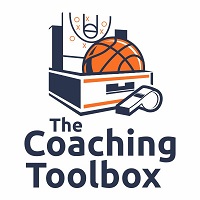
These statements are from the Princeton Hybrid Offense eBook.
Whether or not they fit your beliefs and players, I hope that they will at least prompt you to clarify in writing what your beliefs are. It will clarify things for everyone in your program and allow you to be more specific and efficient in your planning and use of practice time.
This week’s featured eBook bundle is the Princeton Hybrid Offense eBook along with the Comprehensive Ball Screen Playbook eBook. You can see their descriptions at this Link: Princeton Hybrid Offense and Ball Screen Playbooks
Princeton Offensive Philosophy
We believe that one basic formation in the half court followed by different options will be the most successful style of play for us. The first thing we want to do after a defensive rebound is to push the ball to see if we have an advantage. Anytime we have a good shot in transition, we want to take advantage of our numbers. A good shot for us means a lay-up or an open shot for a very good shooter. We want to get to the foul line through hard drives and cuts because that is where games are won and lost.
Our half court offense is designed to take advantage of the most difficult defense to play against – half court pressure man to man. This type of defense forces most offenses out of what they want do and breaks down most offenses into one on one play. Our offense is superior for the following reasons:
· We are able to use our quickness to get to the basket and the foul line
· From our 2-3 high set we are able to attack any kind of half court trap without adjusting our alignment
· We are difficult to scout because we don’t call out plays
· We move without the ball and force teams to match our physical conditioning
· We have an open attack where anyone can score rather than specific plays for only a few players
· We only have to learn one position and focus on execution instead of remembering set plays
· We will improve as our shooting, passing, and execution improves
· It relies on mental quickness, fundamentals, and shooting – 3 things we can control
· We don’t have a primary PG because anyone of our players can bring the ball up to start the offense
We believe our offensive attack incorporates the following principles of offensive play:
1. Drive to the basket (Fouls)
2. Inside out game (three point shot)
3. Pass/Cut opportunities
4. Penetrate and pitch
5. Single screens
6. Screens on the ball
7. Screens on the screener
8. Slipping screens
9. Backdoor cuts
10. Curl cuts
11. Feeding the post
12. Movement with the ball in the post
13. Offensive rebounding position
14. Taking weakside help away
15. Defensive balance
16. Organized team play
Princeton System of Play
Our core three beliefs in priority are:
1. NO TURNOVERS
2. Great Shot Selection
3. Contain the Basketball
Basic Philosophy of Play
1. If you can pass, dribble, and shoot well, you will always dictate to the defense what they do. If you can’t and are not fundamentally sound, they will dictate what you do.
2. You must be able to dribble, pass and shoot, screen and cut – ON THE MOVE UNDER PRESSURE. The quality of your passing determines the quality of your shots! You must dribble with a purpose and the other four players must read the dribbler.
3. Think change of direction–think five players high. Five players must work together.
4. There is a counter for everything the defense does. Do the opposite of what the defense is doing. Must read the defense–are they playing hard or soft–any denial cut backdoor.
5. Think layups and three point shots in that order.
6. Don’t run to the ball!
7. Hit the cutter with a bounce pass (it is OK to use one hand passes). The offense is about hypnotic cuts, passes and hand offs. Timing and cutting are essential to establishing flow and success for the offense.
8. This offense is more about cutting than screening. Move to open spaces. When you screen don’t just screen, screen- and read each situation.
9. CUT CREDIBLY -look for the ball where you are coming open–then get back outside to perimeter as quickly as possible.
10. STAND JUDICIOUSLY – Float to open spot and occupy your man. Have fingers up and butt down, think ball in air feet in air.
11. Five players must work together. UNSELFISHNESS is more important than brains–must couple this with discipline.
This week’s featured eBook bundle is the Princeton Hybrid Offense eBook along with the Comprehensive Ball Screen Playbook eBook. You can see their descriptions at this Link: Princeton Offense and Ball Screen Playbooks






